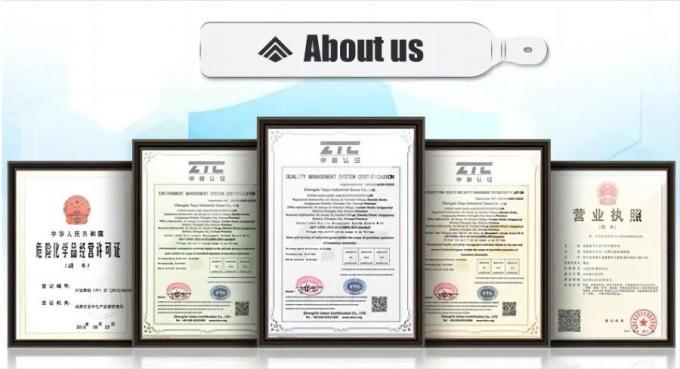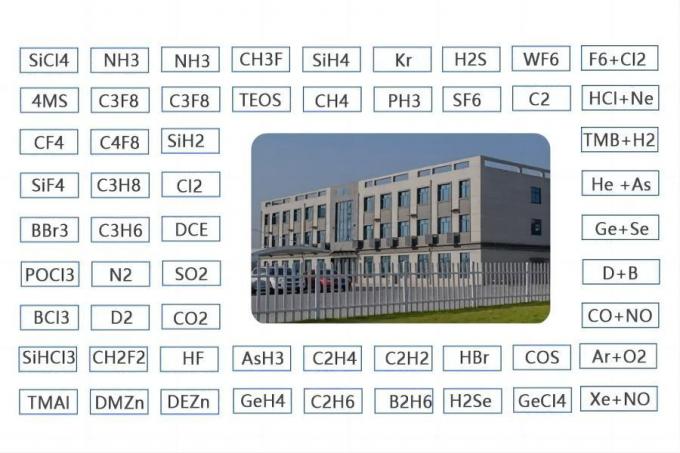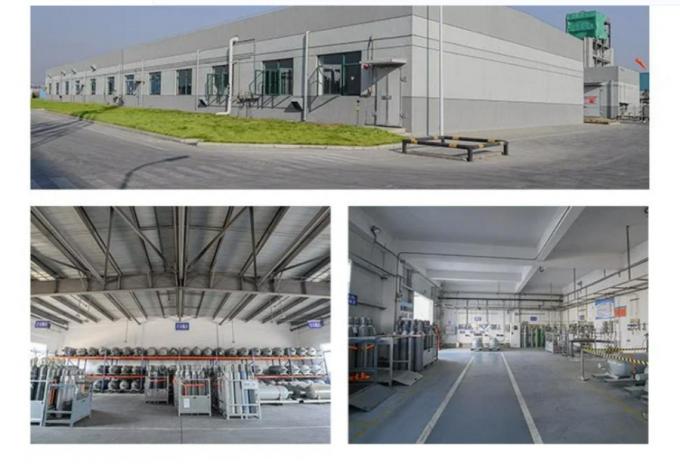


| MOQ: | 1 m3 |
| Price: | US $3/m3 |
| Standard Packaging: | Cylinder |
| Delivery Period: | 15 days |
| Payment Method: | L/C, T/T |
| Supply Capacity: | 1000Tons/year |
Oxygen gas (O2) is a colorless, odorless, and tasteless gas that is essential for sustaining life. It is one of the most abundant elements in the Earth's atmosphere, comprising approximately 21% of the air we breathe. Here are some key points about oxygen gas:
Chemical Composition: Oxygen gas is composed of two oxygen atoms bonded together (O2).
Properties: Oxygen gas possesses several important properties:
Supports Combustion: Oxygen is a highly reactive gas and supports the process of combustion. It acts as an oxidizer, allowing substances to burn more readily in the presence of oxygen.
Essential for Respiration: Oxygen is vital for the process of respiration in living organisms. It is used by cells to produce energy through the process of cellular respiration.
Odorless and Colorless: Oxygen gas is odorless and lacks color, making it difficult to detect without specialized equipment.
Occurrence and Production: Oxygen gas exists in various forms and is produced through natural and industrial processes:
Atmospheric Oxygen: The Earth's atmosphere contains oxygen in the form of diatomic oxygen gas (O2), which is produced primarily through photosynthesis by plants and algae.
Industrial Production: Oxygen gas can be produced industrially through several methods, including the fractional distillation of liquefied air and the electrolysis of water. These processes separate oxygen from other gases and generate high-purity oxygen for various applications.
Uses and Applications: Oxygen gas has a wide range of applications in different fields:
Medical Applications: Oxygen is commonly used in medical settings to assist patients who have difficulty breathing or require supplemental oxygen. It is provided through medical oxygen cylinders or concentrators.
Combustion and Welding: Oxygen is used in various industrial processes, such as metal cutting, welding, and oxy-fuel combustion. When combined with a fuel gas (e.g., acetylene), it produces a high-temperature flame for cutting and welding operations.
Chemical Industry: Oxygen is employed in chemical processes, such as oxidation reactions and the production of chemicals like ethylene oxide, hydrogen peroxide, and methanol.
Water Treatment: Oxygen gas is used in water treatment systems to enhance the biological degradation of organic pollutants and to increase dissolved oxygen levels in bodies of water.
Aerospace and Scuba Diving: Oxygen is used in aviation and space exploration to provide breathable air for pilots, astronauts, and passengers. It is also used in scuba diving as a component of breathing gases.
Environmental Control: Oxygen gas is used in controlled environments, such as greenhouses and aquaculture, to promote plant growth and maintain optimal oxygen levels for aquatic organisms.
Safety Considerations: While oxygen is essential for life, it also poses certain safety risks:
Fire and Explosion Hazard: Oxygen supports combustion, and high concentrations of oxygen can increase the flammability of materials. It is important to handle oxygen with caution and avoid contact with flammable substances.
Oxygen Enrichment: Oxygen-enriched atmospheres, where the oxygen concentration is higher than normal, can increase the risk of fire and make materials more reactive. Care must be taken to prevent the accumulation of oxygen in confined spaces.
Toxicity: Oxygen itself is not toxic, but breathing in very high concentrations of oxygen for an extended period can be harmful. This is why medical oxygen administration should be done under professional supervision.
Pressure Hazards: Oxygen gas can be stored under high pressure. Proper handling of compressed oxygen cylinders and equipment is important to prevent accidents.
Understanding the safe handling, storage, and usage of oxygen gas is crucial to prevent accidents and ensure its effective and responsible use in various applications.
| Transport Package: | 40L/47L/50L/ISO Tank | Melting Point | -218.4 ºC |
| Trademark: | CMC | Boiling Point | -183ºC |
| Specification | 99.999% | Production Capacity | 100, 000m3/Year |
| Cylinder Pressure | 12.5MPa/15MPa/20MPa | Valve | Qf-2/Cga580 |
| Appearance | Colorless, Odorless | Density | 1.429g/L |
Specification:
CAS No.: 7782-44-7
EINECS No.: 231-956-9
UN No.: UN1072
Purity: 99.999%-99.9999%
Dot Class: 2.2 & 5.1
Appearance: Colorless
Grade Standard: Industrial Grade, Grade, Electronic Grade
| Specification | 99.999% |
| Hydrogen | ≤0.5 ppm |
| Argon | ≤2 ppm |
| Nitrogen | ≤5 ppm |
| Carbon Dioxide | ≤0.5 ppm |
| THC (as CH4) | ≤0.5 ppm |
| Moisture | ≤2 ppm |
| Cylinder Specifications | Contents | Pressure | ||
| Cylinder Capacity | Valve | Volume | bar | psig |
| 40L | QF-2 | 7 m3 | 150 | 2175 |
| 47L | QF-2 | 7 m3 | 150 | 2175 |
| 50L | QF-2 | 10 m3 | 200 | 2900 |




| MOQ: | 1 m3 |
| Price: | US $3/m3 |
| Standard Packaging: | Cylinder |
| Delivery Period: | 15 days |
| Payment Method: | L/C, T/T |
| Supply Capacity: | 1000Tons/year |
Oxygen gas (O2) is a colorless, odorless, and tasteless gas that is essential for sustaining life. It is one of the most abundant elements in the Earth's atmosphere, comprising approximately 21% of the air we breathe. Here are some key points about oxygen gas:
Chemical Composition: Oxygen gas is composed of two oxygen atoms bonded together (O2).
Properties: Oxygen gas possesses several important properties:
Supports Combustion: Oxygen is a highly reactive gas and supports the process of combustion. It acts as an oxidizer, allowing substances to burn more readily in the presence of oxygen.
Essential for Respiration: Oxygen is vital for the process of respiration in living organisms. It is used by cells to produce energy through the process of cellular respiration.
Odorless and Colorless: Oxygen gas is odorless and lacks color, making it difficult to detect without specialized equipment.
Occurrence and Production: Oxygen gas exists in various forms and is produced through natural and industrial processes:
Atmospheric Oxygen: The Earth's atmosphere contains oxygen in the form of diatomic oxygen gas (O2), which is produced primarily through photosynthesis by plants and algae.
Industrial Production: Oxygen gas can be produced industrially through several methods, including the fractional distillation of liquefied air and the electrolysis of water. These processes separate oxygen from other gases and generate high-purity oxygen for various applications.
Uses and Applications: Oxygen gas has a wide range of applications in different fields:
Medical Applications: Oxygen is commonly used in medical settings to assist patients who have difficulty breathing or require supplemental oxygen. It is provided through medical oxygen cylinders or concentrators.
Combustion and Welding: Oxygen is used in various industrial processes, such as metal cutting, welding, and oxy-fuel combustion. When combined with a fuel gas (e.g., acetylene), it produces a high-temperature flame for cutting and welding operations.
Chemical Industry: Oxygen is employed in chemical processes, such as oxidation reactions and the production of chemicals like ethylene oxide, hydrogen peroxide, and methanol.
Water Treatment: Oxygen gas is used in water treatment systems to enhance the biological degradation of organic pollutants and to increase dissolved oxygen levels in bodies of water.
Aerospace and Scuba Diving: Oxygen is used in aviation and space exploration to provide breathable air for pilots, astronauts, and passengers. It is also used in scuba diving as a component of breathing gases.
Environmental Control: Oxygen gas is used in controlled environments, such as greenhouses and aquaculture, to promote plant growth and maintain optimal oxygen levels for aquatic organisms.
Safety Considerations: While oxygen is essential for life, it also poses certain safety risks:
Fire and Explosion Hazard: Oxygen supports combustion, and high concentrations of oxygen can increase the flammability of materials. It is important to handle oxygen with caution and avoid contact with flammable substances.
Oxygen Enrichment: Oxygen-enriched atmospheres, where the oxygen concentration is higher than normal, can increase the risk of fire and make materials more reactive. Care must be taken to prevent the accumulation of oxygen in confined spaces.
Toxicity: Oxygen itself is not toxic, but breathing in very high concentrations of oxygen for an extended period can be harmful. This is why medical oxygen administration should be done under professional supervision.
Pressure Hazards: Oxygen gas can be stored under high pressure. Proper handling of compressed oxygen cylinders and equipment is important to prevent accidents.
Understanding the safe handling, storage, and usage of oxygen gas is crucial to prevent accidents and ensure its effective and responsible use in various applications.
| Transport Package: | 40L/47L/50L/ISO Tank | Melting Point | -218.4 ºC |
| Trademark: | CMC | Boiling Point | -183ºC |
| Specification | 99.999% | Production Capacity | 100, 000m3/Year |
| Cylinder Pressure | 12.5MPa/15MPa/20MPa | Valve | Qf-2/Cga580 |
| Appearance | Colorless, Odorless | Density | 1.429g/L |
Specification:
CAS No.: 7782-44-7
EINECS No.: 231-956-9
UN No.: UN1072
Purity: 99.999%-99.9999%
Dot Class: 2.2 & 5.1
Appearance: Colorless
Grade Standard: Industrial Grade, Grade, Electronic Grade
| Specification | 99.999% |
| Hydrogen | ≤0.5 ppm |
| Argon | ≤2 ppm |
| Nitrogen | ≤5 ppm |
| Carbon Dioxide | ≤0.5 ppm |
| THC (as CH4) | ≤0.5 ppm |
| Moisture | ≤2 ppm |
| Cylinder Specifications | Contents | Pressure | ||
| Cylinder Capacity | Valve | Volume | bar | psig |
| 40L | QF-2 | 7 m3 | 150 | 2175 |
| 47L | QF-2 | 7 m3 | 150 | 2175 |
| 50L | QF-2 | 10 m3 | 200 | 2900 |


